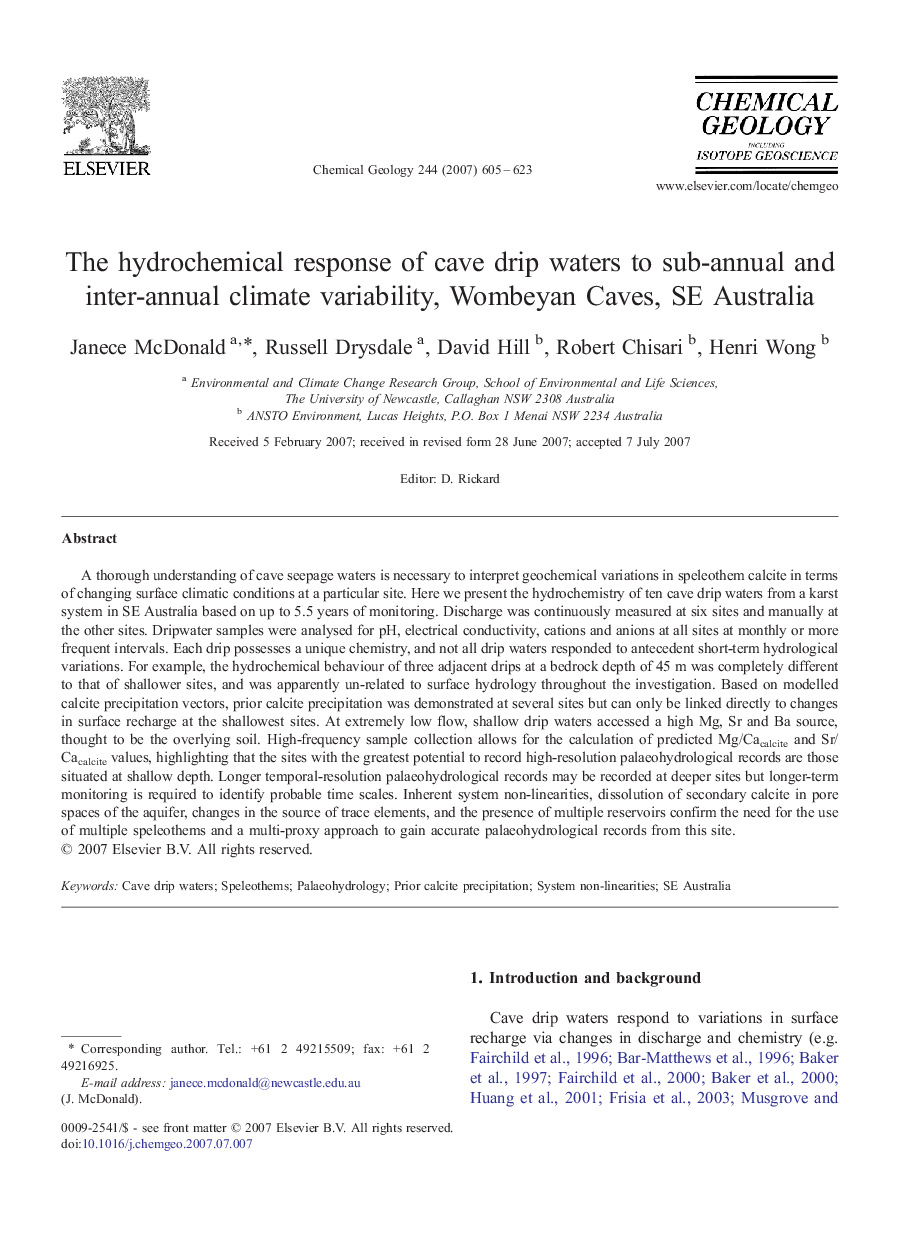| کد مقاله | کد نشریه | سال انتشار | مقاله انگلیسی | نسخه تمام متن |
|---|---|---|---|---|
| 4700910 | 1637741 | 2007 | 19 صفحه PDF | دانلود رایگان |

A thorough understanding of cave seepage waters is necessary to interpret geochemical variations in speleothem calcite in terms of changing surface climatic conditions at a particular site. Here we present the hydrochemistry of ten cave drip waters from a karst system in SE Australia based on up to 5.5 years of monitoring. Discharge was continuously measured at six sites and manually at the other sites. Dripwater samples were analysed for pH, electrical conductivity, cations and anions at all sites at monthly or more frequent intervals. Each drip possesses a unique chemistry, and not all drip waters responded to antecedent short-term hydrological variations. For example, the hydrochemical behaviour of three adjacent drips at a bedrock depth of 45 m was completely different to that of shallower sites, and was apparently un-related to surface hydrology throughout the investigation. Based on modelled calcite precipitation vectors, prior calcite precipitation was demonstrated at several sites but can only be linked directly to changes in surface recharge at the shallowest sites. At extremely low flow, shallow drip waters accessed a high Mg, Sr and Ba source, thought to be the overlying soil. High-frequency sample collection allows for the calculation of predicted Mg/Cacalcite and Sr/Cacalcite values, highlighting that the sites with the greatest potential to record high-resolution palaeohydrological records are those situated at shallow depth. Longer temporal-resolution palaeohydrological records may be recorded at deeper sites but longer-term monitoring is required to identify probable time scales. Inherent system non-linearities, dissolution of secondary calcite in pore spaces of the aquifer, changes in the source of trace elements, and the presence of multiple reservoirs confirm the need for the use of multiple speleothems and a multi-proxy approach to gain accurate palaeohydrological records from this site.
Journal: Chemical Geology - Volume 244, Issues 3–4, 15 October 2007, Pages 605–623